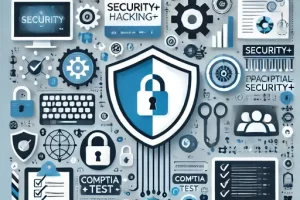Certified in the Governance of Enterprise IT (CGEIT)
Master Enterprise IT Governance with Certified in the Governance of Enterprise IT (CGEIT)
In today’s complex business environment, effective IT governance is crucial for aligning IT with organizational goals. The Certified in the Governance of Enterprise IT (CGEIT) certification is a leading credential that validates your expertise in enterprise IT governance. This blog will explore the benefits of the CGEIT certification, compare it with other top certifications, and offer tips for successful preparation.
What is the Certified in the Governance of Enterprise IT (CGEIT)?
The Certified in the Governance of Enterprise IT (CGEIT) certification, offered by ISACA, is designed for professionals who manage and oversee enterprise IT governance. It demonstrates your ability to ensure that IT supports and enhances business objectives, manages risks, and ensures compliance with regulations.
Why Pursue the CGEIT Certification?
- Industry Recognition: CGEIT is recognized globally as a premier credential for IT governance professionals, showcasing your expertise in aligning IT with business goals.
- Comprehensive Knowledge: The certification covers key areas such as IT governance frameworks, risk management, and resource management, providing a holistic understanding of enterprise IT governance.
- Career Advancement: Earning CGEIT can lead to roles such as IT Governance Manager, IT Director, and Chief Information Officer (CIO), enhancing your career prospects in IT governance and management.
Comparing the CGEIT Certification with Other IT Governance Certifications
1. Certified in the Governance of Enterprise IT (CGEIT) vs. Certified Information Systems Auditor (CISA)
- Scope: CISA focuses on auditing and control, while CGEIT emphasizes IT governance and management.
- Target Audience: CISA is ideal for those in audit and control roles, whereas CGEIT is suited for professionals managing IT governance and strategy.
2. Certified in the Governance of Enterprise IT (CGEIT) vs. Certified Information Security Manager (CISM)
- Focus: CISM is centered on information security management, whereas CGEIT focuses on overall IT governance and alignment with business objectives.
- Application: CISM is ideal for those specializing in information security, while CGEIT is perfect for those overseeing IT governance and ensuring IT supports business goals.
3. Certified in the Governance of Enterprise IT (CGEIT) vs. ITIL Foundation
- Scope: ITIL Foundation focuses on IT service management best practices, while CGEIT is centered on IT governance and strategic alignment.
- Career Path: ITIL is useful for those in service management roles, while CGEIT is suited for professionals involved in IT governance and enterprise strategy.
How to Prepare for the CGEIT Exam
Effective preparation is key to passing the CGEIT exam. Here are some strategies to help you succeed:
- Understand the Exam Objectives: Review the CGEIT exam blueprint to familiarize yourself with key topics such as IT governance frameworks, risk management, and compliance.
- Study Resources: Use official ISACA study materials, online courses, and practice exams to build your knowledge and skills.
- Practical Experience: Gain experience in IT governance roles to apply the concepts and enhance your understanding of real-world scenarios.
Conclusion
The Certified in the Governance of Enterprise IT (CGEIT) certification is a valuable credential for professionals seeking to advance their expertise in IT governance. By mastering the principles of IT governance and aligning IT with business goals, you’ll be well-equipped to enhance your career and contribute to organizational success.
For more information about the CGEIT certification and to begin your preparation, visit the official ISACA website or consult with accredited training providers.


